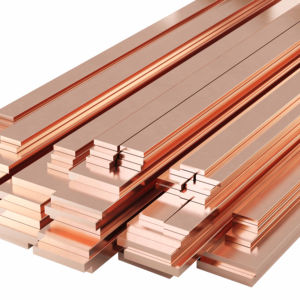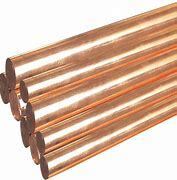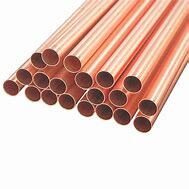1. Introduction
Just 48 hours ago, the International Copper Association reported a 12% surge in global demand for recycled copper, driven by renewable energy installations and electric vehicle infrastructure. This spike has made stripping copper wire for scrap more profitable than ever—especially when you recover clean, bare copper ready for resale as copper rod, copper strip, or feedstock for copper ingot production.

If you’ve got bundles of old wiring, motor windings, or telecom cables lying around, knowing the best way to strip copper wire can significantly boost your return. In this guide, we’ll show you how to do it safely, legally, and efficiently—without resorting to dangerous methods like burning copper wire for scrap.
2. Why Stripping Copper Wire Matters
Scrap yards pay far more for bare bright copper than insulated wire. Clean copper can be melted down and reformed into copper rod, copper round bar, or flat copper strip used in everything from earthing systems to aircon copper pipe manufacturing.
Unstripped wire often contains PVC or rubber insulation that releases toxic fumes when burned—plus, many recyclers now reject burned copper due to contamination. Stripping properly ensures you get top copper rod price and copper strip price at local buyers.
3. Tools You’ll Need
- Manual wire stripper (for small jobs)
- Automatic wire stripping machine (for volume)
- Utility knife (use with caution)
- Heat gun (optional, for stubborn insulation)
- Safety gloves and goggles
Avoid using pliers or teeth—these can nick the copper, reducing its value. Also, never burn insulation off; it’s illegal in many areas and ruins the metal’s purity.
4. Step-by-Step: How to Strip Copper Wire Safely
4.1. Sort Your Wire First

Separate types: THHN, Romex, coaxial, and motor magnet wire all require different handling. Focus on thick copper wire first—like 10–12 AWG—since it yields the most bare copper per foot and is easiest to strip.
Remove any non-copper components (steel armor, aluminum strands) to avoid contamination. Pure copper wire fetches the best copper strip price and is ideal for making copper to copper welding rod or copper brazing rod later.
4.2. Use the Right Tool for the Job
For short runs or household scrap, a manual wire stripper works fine. Cut a small slit in the insulation, then peel it back gently.
For long cables or bulk recycling, invest in an automatic stripper. These can process hundreds of feet per hour and preserve the integrity of the copper metal strips inside.
Never use a knife to shave insulation unless absolutely necessary—it’s easy to gouge the copper, lowering its grade from ‘bare bright’ to ‘tinned’ or ‘insulated scrap.’
4.3. Handle Difficult Insulation
Some older wires have rubber or fabric insulation that’s hard to remove. A heat gun (set to low) can soften it just enough to peel away—don’t overheat, or you’ll oxidize the copper.

For motor windings or enameled wire, you may need a specialized stripper or chemical dip (available from electronics recyclers). These preserve the thin copper strands used in beryllium copper strip production.
5. Common Mistakes to Avoid
- Burning copper wire for scrap: Releases dioxins and reduces copper purity. Most reputable yards won’t accept it.
- Mixing copper alloys: Brass, bronze, or nickel plated copper strip should be separated. Pure copper commands higher copper rod price.
- Selling unstripped wire: You’ll earn 30–50% less. Always strip before selling.
Also, don’t confuse copper strip with copper stip (a common typo). When searching for ‘copper strip near me,’ ensure you’re looking for flat, rolled products like 1mm copper strip or copper earth strip 25x3mm—not scrap wire.
6. Where and How to Sell Your Stripped Copper
Once stripped, bundle your bare copper neatly. Most scrap yards categorize it as ‘Bare Bright’—the highest grade. Current copper rod price and copper ingot price hover near $8.50/lb (as of June 2024), making clean copper extremely valuable.
Look for recyclers that also deal in copper bonded ground rod or copper clad steel earth rod—they often pay premium rates for high-purity input material.
Pro tip: If you have large quantities, ask if they buy copper strip roll or flexible copper bus bar. Some processors will even accept thin copper strips for re-rolling.
7. Bonus: Repurposing Stripped Copper
Beyond scrap, clean copper wire can be reused. Melt it into copper ingot for casting, or draw it into custom copper rod for welding. DIYers often make copper to copper welding rod or copper brazing rod for home projects.
Flat pieces can be hammered into copper edging strip or copper roof strip. Artists use thin copper strips for jewelry, while electricians repurpose them as copper strip for earthing in small installations.
8. Conclusion
Stripping copper wire for scrap isn’t just about extra cash—it’s a smart recycling practice that feeds into global supply chains for copper rod, copper tubing, and copper strip. By using the right tools and avoiding shortcuts like burning, you protect both your profits and the environment.
With copper demand rising and prices strong, now’s the perfect time to learn the best way to strip copper cable. Whether you’re cleaning up a job site or clearing out an old workshop, clean copper always wins.
Our Website founded on October 17, 2012, is a high-tech enterprise committed to the research and development, production, processing, sales and technical services of ceramic relative materials such as How. Our products includes but not limited to Boron Carbide Ceramic Products, Boron Nitride Ceramic Products, Silicon Carbide Ceramic Products, Silicon Nitride Ceramic Products, Zirconium Dioxide Ceramic Products, etc. If you are interested, please feel free to contact us.

